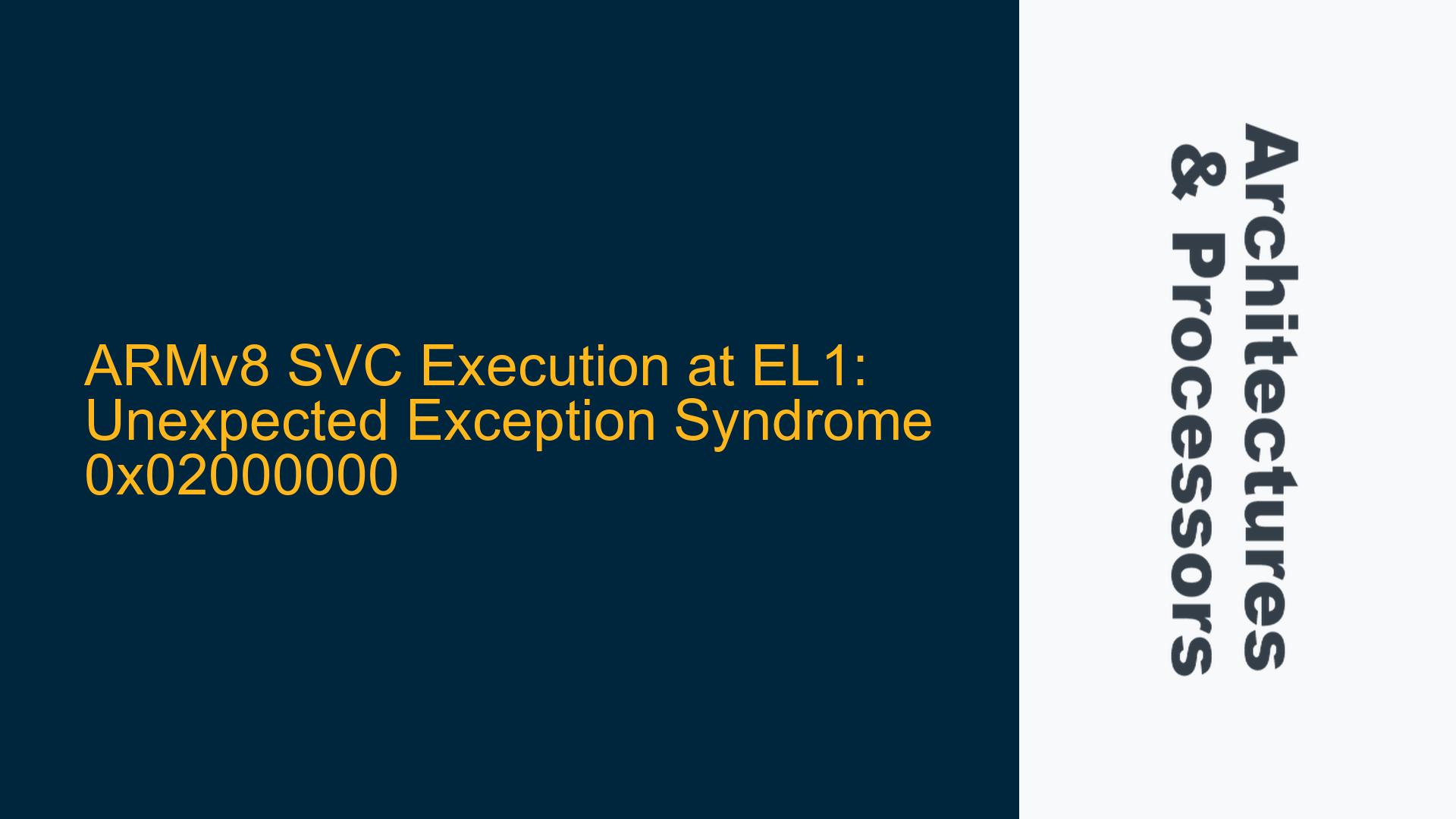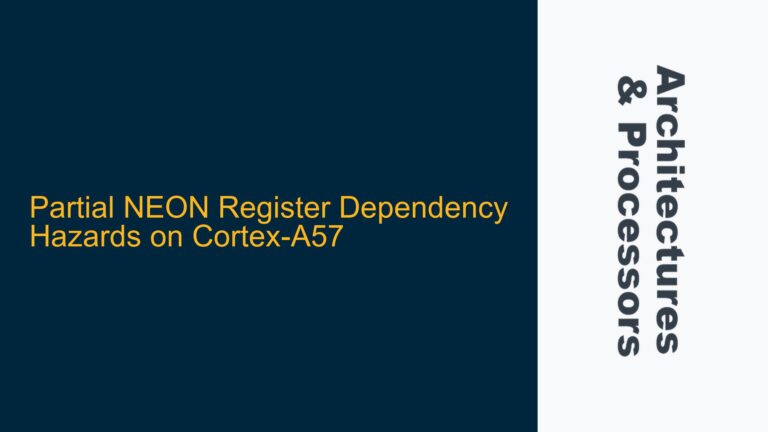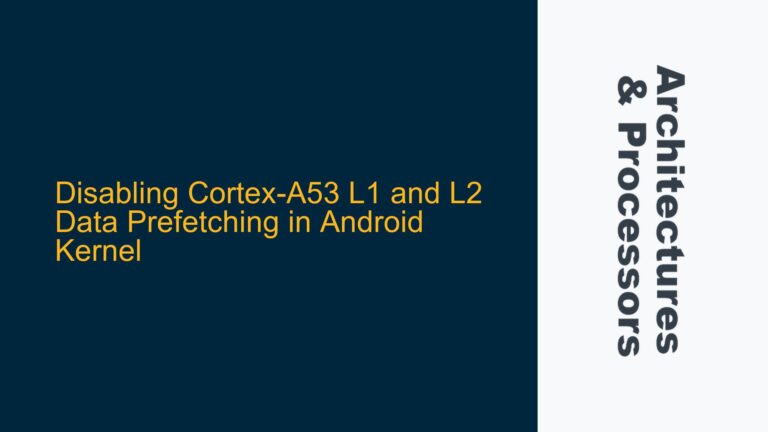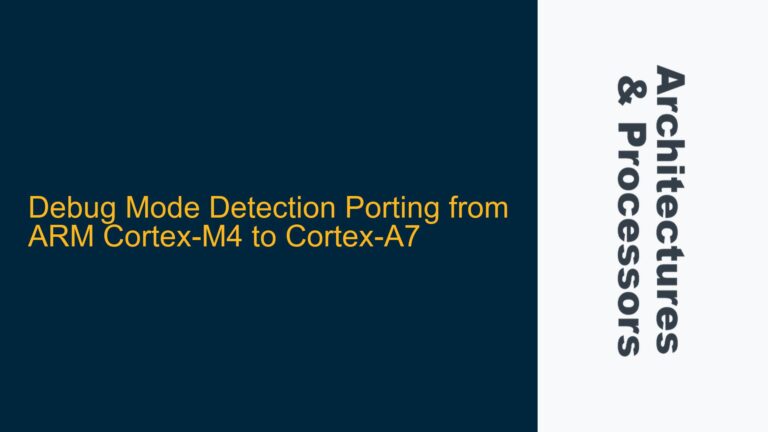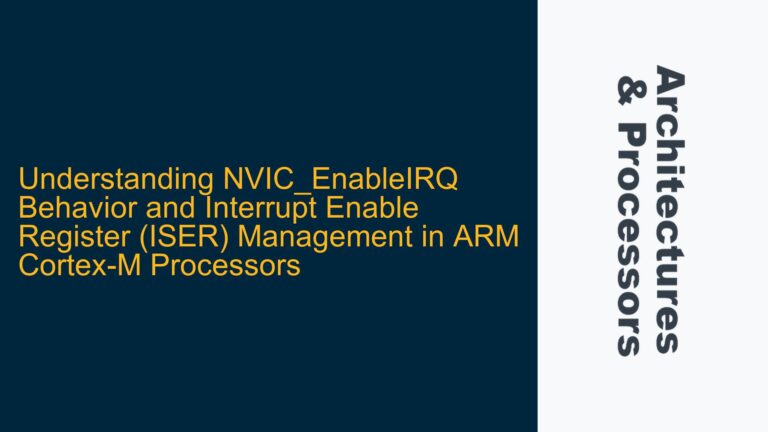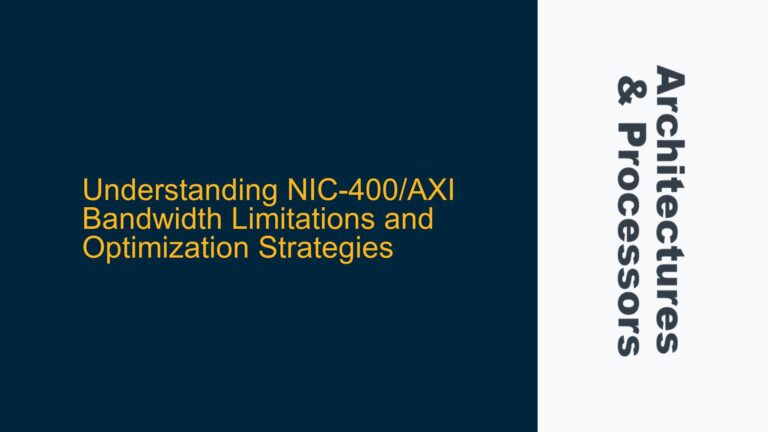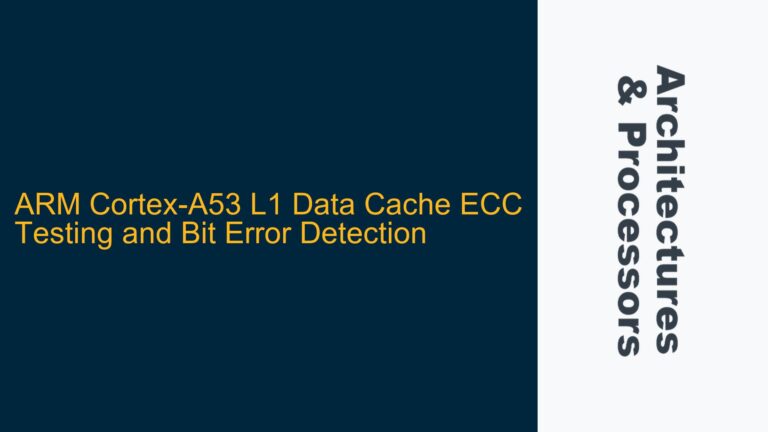ARM Cortex-A53 SVC Execution at EL1: Correct vs. Incorrect Exception Syndrome
In ARMv8 architectures, the SVC (Supervisor Call) instruction is a critical mechanism for invoking privileged operations from lower exception levels. When executed at EL1 (Exception Level 1), the SVC instruction should generate a synchronous exception with a specific exception class (EC) in the ESR_EL1 (Exception Syndrome Register at EL1). The expected EC for an SVC instruction executed in AArch64 state is 0b01010101, which corresponds to the syndrome value 0x56000001. However, in some cases, particularly when debugging or running on multi-core systems, the SVC instruction may result in an unexpected syndrome value of 0x02000000, which corresponds to EC 0b000000 ("reason unknown"). This discrepancy can lead to confusion and hinder debugging efforts, especially when the behavior is inconsistent across cores in a multi-core system like the ARM Cortex-A53.
The core issue revolves around the correct handling of the SVC instruction at EL1 and the conditions under which the ESR_EL1 register may report an incorrect or unexpected syndrome. This issue is particularly relevant in systems where multiple cores are initialized with identical configurations but exhibit divergent behavior when executing the same SVC instruction. The root cause often lies in subtle differences in system register configurations, debugger interactions, or higher-priority exceptions that preempt the SVC exception.
System Register Mismatches and Higher-Priority Exceptions
One of the primary causes of the unexpected syndrome value 0x02000000 is the presence of higher-priority exceptions that preempt the SVC exception. According to the ARMv8-A architecture reference manual (section D1.12.4, "Synchronous exception prioritization for exceptions taken to AArch64 state"), exceptions are prioritized, and certain exceptions can mask others. For example, debug exceptions, external aborts, or system errors may take precedence over the SVC exception, leading to the ESR_EL1 register capturing the syndrome of the higher-priority exception instead of the expected SVC syndrome.
Another potential cause is subtle differences in system register configurations between cores. While the cores may appear to be initialized identically, differences in registers such as SP_ELx (Stack Pointer at ELx), ELR_ELx (Exception Link Register at ELx), TTBR0_ELx (Translation Table Base Register 0 at ELx), and VBAR_ELx (Vector Base Address Register at ELx) can lead to divergent behavior. These differences may arise due to variations in address space configurations or unintended side effects of core initialization routines. Additionally, registers like HFGITR_EL2 (Hypervisor Fine-Grained Instruction Trap Register at EL2) and SCR_EL3 (Secure Configuration Register at EL3) can influence exception handling, particularly if they are not configured consistently across cores.
Debugger interactions can also play a significant role in this issue. Debuggers may inadvertently trigger exceptions or modify system registers, leading to unexpected syndrome values. For instance, stepping through code with a debugger may cause the ESR_EL1 register to be populated with a syndrome value that does not correspond to the SVC instruction. This behavior can obscure the true cause of the issue and complicate debugging efforts.
Verifying System Register Configurations and Debugger Interactions
To troubleshoot and resolve the issue of unexpected syndrome values during SVC execution at EL1, a systematic approach is required. The first step is to verify that all system registers are configured consistently across cores. This includes comparing registers such as SP_ELx, ELR_ELx, TTBR0_ELx, VBAR_ELx, and any other relevant control registers. Any discrepancies should be investigated and resolved to ensure uniform behavior across cores.
Next, it is essential to rule out higher-priority exceptions as the cause of the unexpected syndrome. This can be achieved by disabling interrupts and other potential sources of exceptions during the execution of the SVC instruction. If the issue persists, it may be necessary to examine the exception handling logic and ensure that the SVC exception is not being preempted by other exceptions.
Debugger interactions should also be scrutinized. To determine whether the debugger is influencing the syndrome value, the SVC instruction can be executed without debugger intervention. This can be done by adding diagnostic code to print the contents of the ESR_EL1 register within the exception handler. If the syndrome value is correct when the debugger is not attached, this indicates that the debugger is likely contributing to the issue. In such cases, it may be necessary to adjust debugger settings or use alternative debugging techniques.
Finally, if the issue remains unresolved, it may be helpful to consult the ARM Architecture Reference Manual and the pseudo-code for the SVC instruction execution. The pseudo-code provides a detailed description of the expected behavior and can help identify any deviations from the specification. Additionally, ARM support forums and community resources can provide valuable insights and potential solutions from other developers who have encountered similar issues.
By following these troubleshooting steps, developers can identify and resolve the root cause of unexpected syndrome values during SVC execution at EL1, ensuring consistent and reliable behavior across all cores in a multi-core ARM system.
